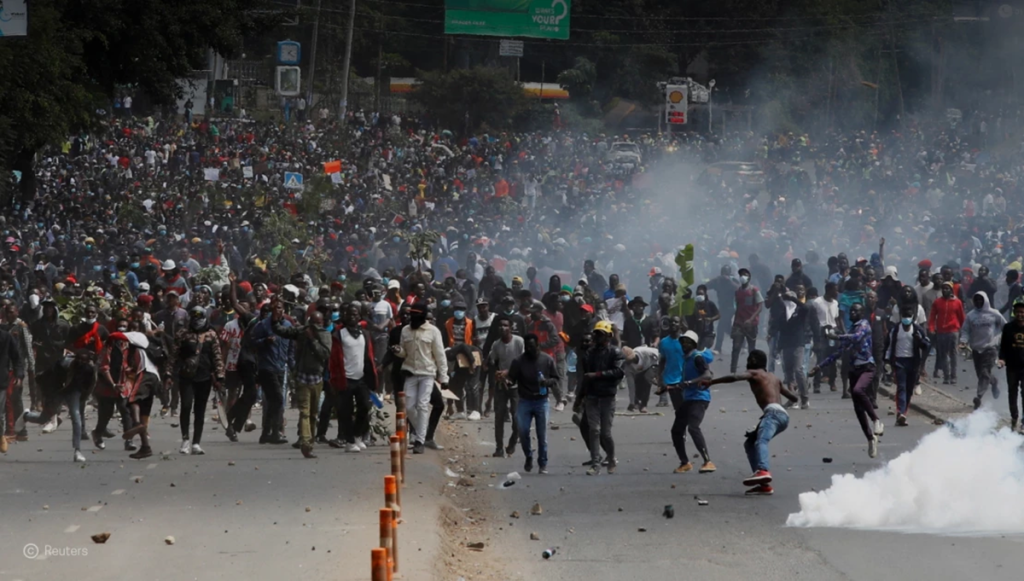On Tuesday, July 16, Kenyan police fired tear gas at protesters who gathered in Kitengela, near Nairobi, demanding the resignation of Kenya’s president, William Ruto.
The protests persist despite Ruto implementing several changes.
The demonstrators, unhappy about proposed tax increases, called for a nationwide “shutdown” on Tuesday. Despite Ruto’s withdrawal of the $2.7 billion tax increases and reshuffling of his cabinet, the protests continue.
Ruto is being held accountable for poor governance, corruption and the deaths of previous demonstrators. The protesters burnt tyres chanting against Ruto which prompted the police to disperse them by firing tear gas. Protesters also met with tear gas at Nairobi’s city centre and Mombasa.

President Ruto had announced plans to discuss the situation with protesters, allowing them to air their grievances, but talks have not commenced. Many activists have refused to take part, insisting on immediate action against corruption and other issues. Ruto’s spokesperson refrained from commenting on the situation.
Kenya is struggling with debt and over 30% of its revenue is allocated to paying interest.
Creditors are pressuring Ruto to reduce deficits while also addressing the challenges faced by a populace enduring high living expenses.
According to human rights organisations, 40 people have died during the protests as they turned violent.
Ruto accused the Ford Foundation of financing the protests without providing any evidence. In response, the Ford Foundation denied all allegations stating that it does not fund protests but maintains a nonpartisan stance.


